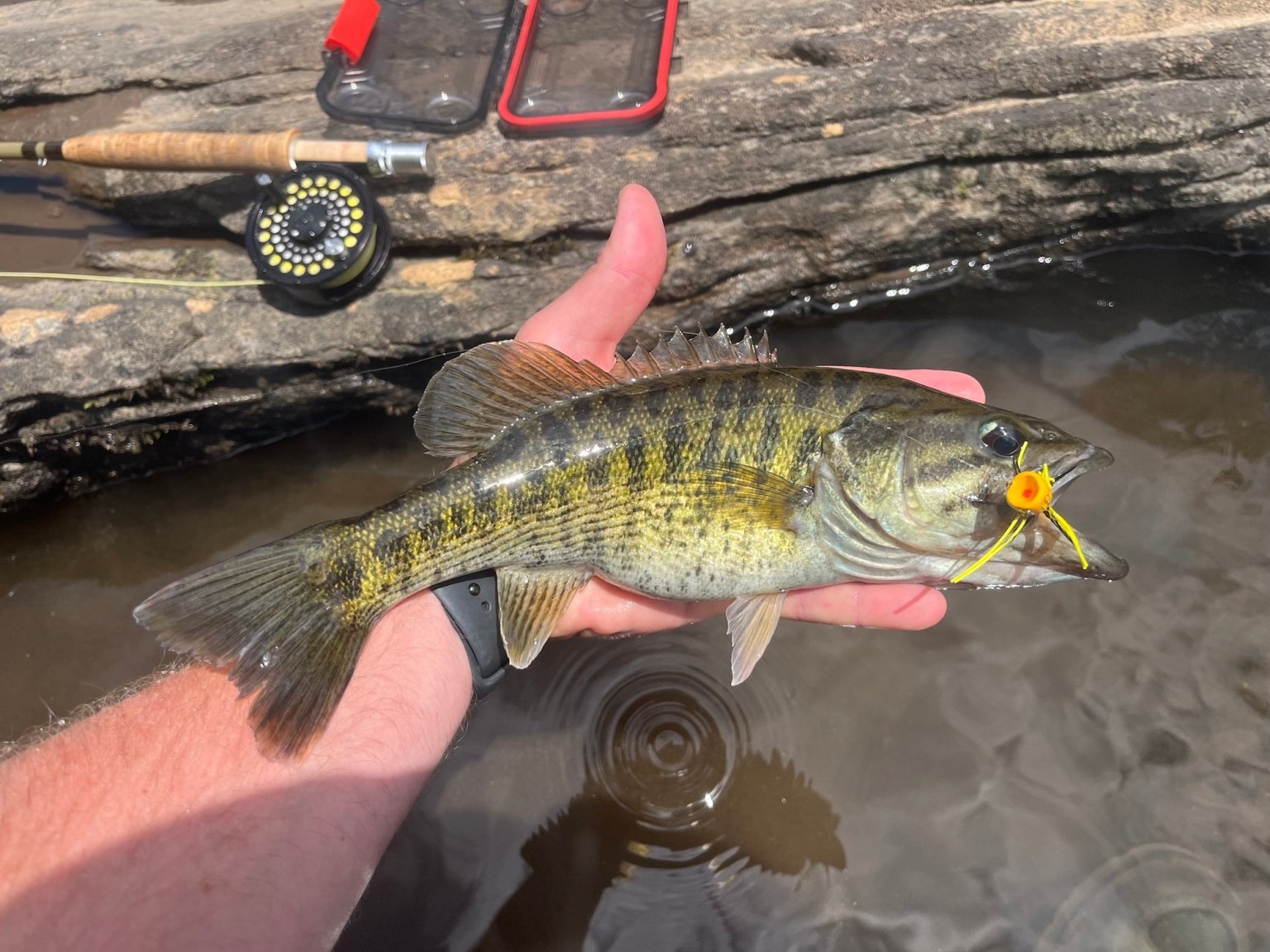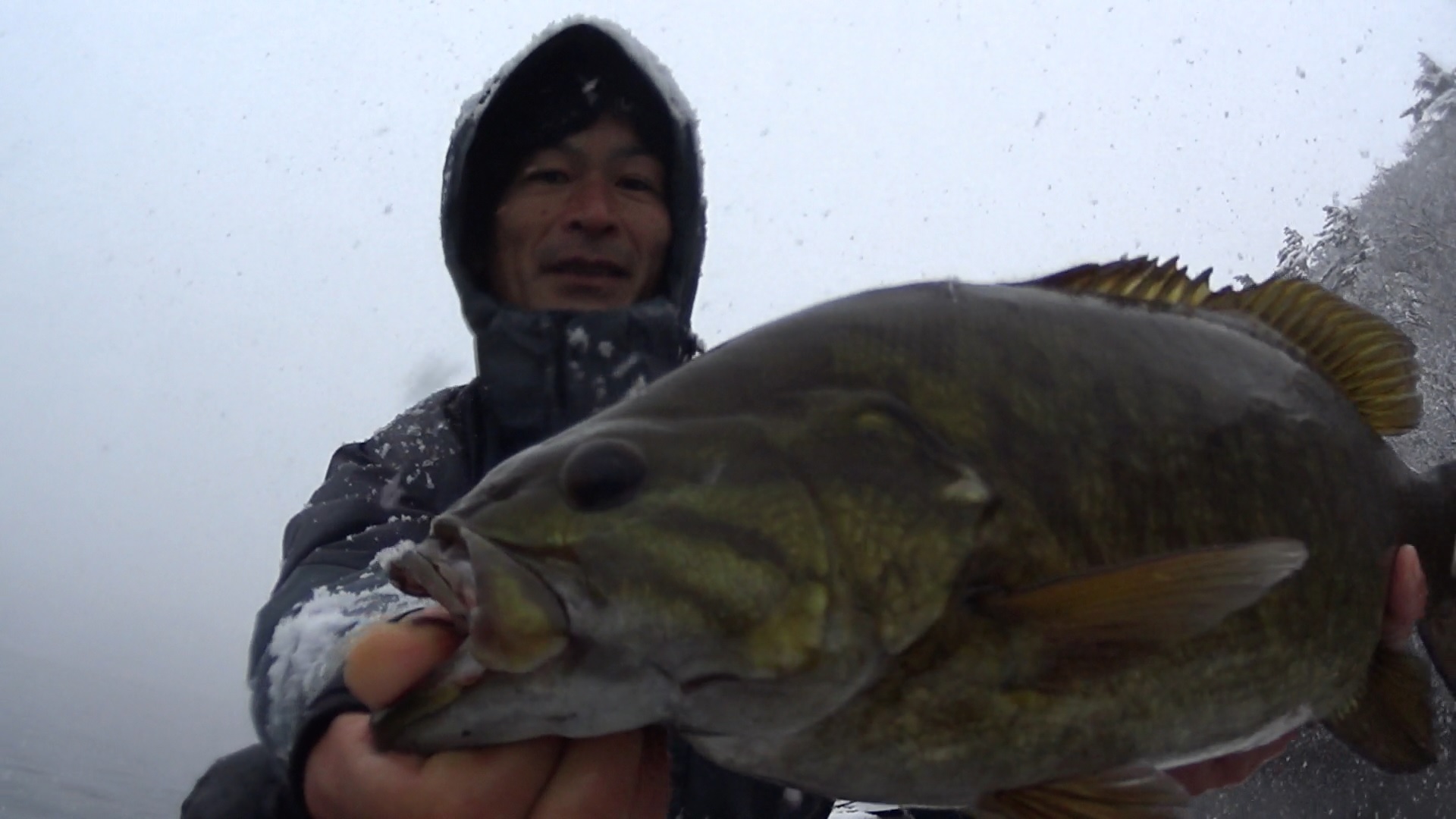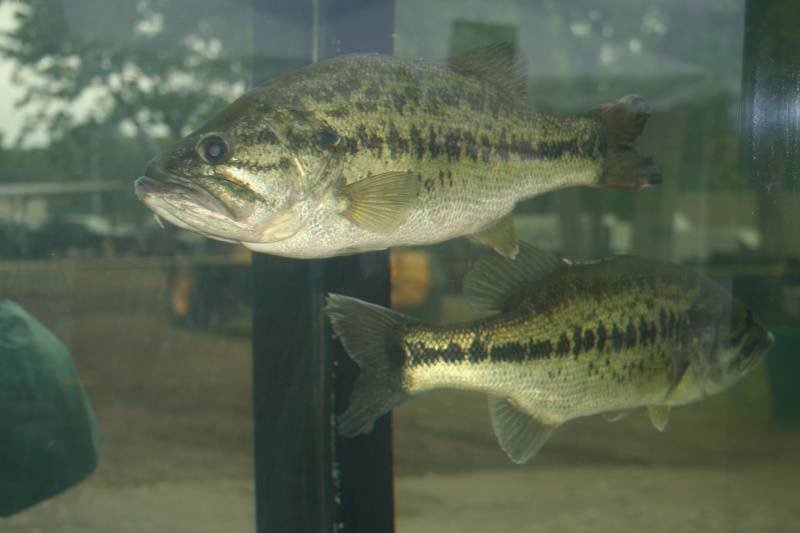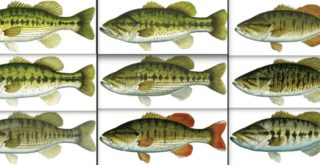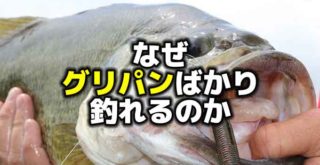ブラックバスの種類は19種類まで増えた!?
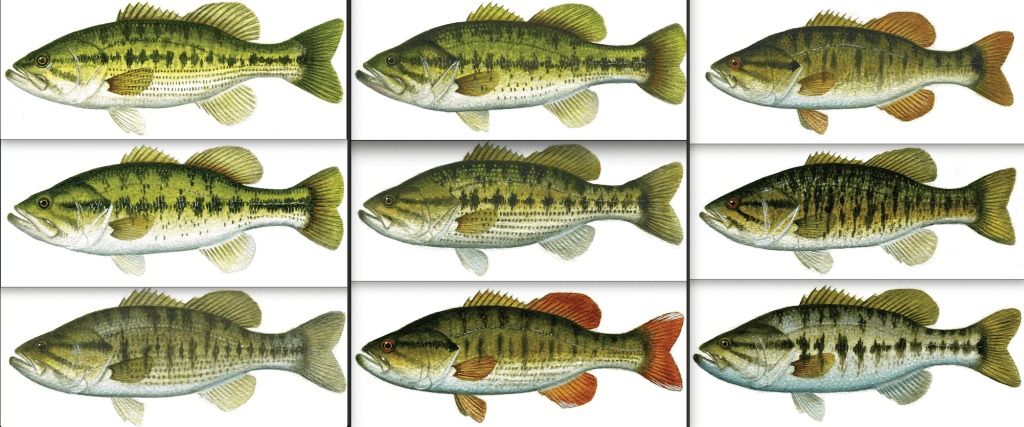
新しい遺伝学的研究により、ラージマウスバスを含む19種類のブラックバスの進化的関係が明らかになりました。スモールマウスバスと近縁の2つの新種も特定されています。南東部の多くの小さな河川に生息するレッドアイバス種は、生息地の破壊と外来種の脅威によって絶滅の危機になっています。ここでは、研究の主な発見について書いていきます。
こんにちは!店長の小山です!
日本に生息し、ルアーフィッシングの対象として人気のあるノーザンラージマウスバス、フロリダラージマウスバス、スモールマウスバスの3種のブラックバスですが、日本人からすると、この3種がブラックバスだと思っている方はもしかしたら多いかもしれません。
アメリカではいま、新しい研究結果が注目されています。ブラックバスには予想以上に多くの種類が存在し、生態も地域によって大きく異なることが判明しているようです。
たとえば、ニホンジカやニホンザルも一見すると同じ種に見えますが、実際には亜種レベルで遺伝的に異なるグループが存在しているようなんです。ブラックバスでも同じように、見た目だけで種類を判断することは難しいということなんですね。
そのアメリカの新発見のブラックバスには生息域が限定的なものもあり、生息地の自然破壊や外来種の影響で絶滅の危機になっているようです。
そうなると、もしかしたら、いま日本で釣られているブラックバスも、珍しい遺伝子を持つ希少種の可能性も考えられますよね。
この記事は、アメリカバスマスター公式サイトのコラム記事で、ライターのロバート・モンゴメリー氏が、新たなブラックバスの新種について語っています。
引用先:
また、当ブログにも関連記事がございます。
バス釣りを愛する者として、この情報には興味があります。ちょっと難しい話でしたので、今回は分かる部分を要約してご紹介いたします。
バスって19種類もいるの!?
The first fish classified as a largemouth bass and bestowed with the Latin name Micropterus salmoides most likely was not a largemouth bass, according to fisheries scientists who recently completed a comprehensive study of the evolutionary and genomic history of black bass.
This error was more the result of the limitations of the time than sloppy science. The determination was made based on samples taken around Charleston, S.C., in 1802 before other species of black bass were known to exist. But now Andrew Taylor from the University of Central Oklahoma and his associates believe that fish was a Florida bass.
Their revelation concurs with research by Auburn biologists, who asserted the natural range of Florida bass extends far beyond peninsular Florida, as had been generally accepted for decades.
“Imagine our surprise, then, as we began to see fish that we assumed were largemouth bass along the Atlantic coast of Georgia, South Carolina and North Carolina be assigned with great certainty to [be] Florida bass,” said Taylor.
“It turns out that the scale counts used by Bailey and Hubbs [who described a Florida subspecies of black bass in 1949] must not be very reliable in distinguishing the two species, and this changes the known natural distribution of the two species.”
Additionally, he added, that means Florida bass now should be known as
M. salmoides, while largemouth bass should be renamed M. nigricans.For their report titled “Phylogenomics and species delimitation of the economically important Black Basses,” Kim Daemin and Thomas Near teamed with Taylor to analyze the DNA of 394 specimens from all the black bass species. They and their colleagues collected some samples in the field between 2002 and 2020. Others they obtained from museums and wildlife agencies.
They then constructed a time-calibrated species tree dating back millions of years to explain the evolution of 19 black bass species, including 14 described species, three that are well-known but lack description and two that Taylor said “are new to science through this paper.”
“This study showed that largemouth bass are part of a species complex, which wasn’t known before,” said Yale’s Kim. “It made me realize that largemouth bass were stocked throughout South Korea and East Asia, but they don’t actually know what specific species they are dealing with. Our work can help address this issue and support better management and conservation.”
Those complexes include largemouth, smallmouth, spotted and redeye bass. Additionally, Suwannee bass and shoal bass diverged from the rest as distinct species millions of years ago.
Well into this century, the shoal bass was believed to be a variety of redeye bass. But Taylor said, “Our phylogenomics actually show they do not belong with the redeye species complex. The shoal bass shares close relatives with the smallmouth complex, redeye complex and spotted bass complex.”
Smallmouth discoveries
Of interest to anglers is that the biologists say those two “new to science” species belong to the smallmouth bass complex, which also includes the smallmouth bass and Neosho bass. One of those undescribed species inhabits the Little River system in southeast Oklahoma, while the other lives in the Ouachita River system in southwest Arkansas. Both river systems begin in the Ouachita Mountains and are tributaries of the Red River.To thrive, both species require cool, fast-flowing streams with pools and riffles, the scientists said, but both are suffering because of habitat lost mostly to agriculture. Conservation efforts are needed to save both, Kim said, as their habitats have been reduced to only a few upstream tributaries in those rivers.
Of the Neosho, Taylor said, “We think that there’s enough evidence now that this fish should be its own species.
“We once believed that it was just a local variety of smallmouth. But then rivers were dammed to make lakes like Tenkiller and Grand and we assumed that those fish would do well.”
That assumption was based on the fact that river smallmouth bass in the Cumberland and Tennessee rivers thrived in impoundments.
Smallmouth bass from the Neosho River system, however, “did not take” to impoundments, Taylor explained.
“And now that makes sense. The Neosho is not ecologically identical to the smallmouth. The Neosho must spawn in streams, and it has a different longevity. We provide a blueprint for what we believe the differences are, but we need to know more.”
Generally, the Neosho is more streamlined and lighter in color than the smallmouth, without the “tiger stripes.”
“But more can be done to help anglers distinguish them,” the biologist added. “Right now, it’s mostly a matter of, ‘Where did you catch it?’”
Additionally, the three well-known but undescribed species include Bartram’s bass and Altamaha bass in the redeye complex and Choctaw bass in the spotted bass complex.
Because so many of these lesser-known fish inhabit streams of the Southeast and Middle Atlantic, their preservation is threatened more than ever these days because anglers illegally have released the Alabama bass into so many reservoirs.
“If you put that fish in a lake, it doesn’t just have consequences for the lake,” Taylor said. “Alabama bass are especially good at moving upstream. They spread like wildfire. They are common now in the Savannah River system, and they probably originally were released into just one or two lakes.”
While in those impoundments, meanwhile, Alabama bass hybridize with smallmouth bass, destroying the genetic integrity of those fisheries, and often outcompete largemouth for forage and habitat.
“The less we move fish, the more protected they are and the better it is for them and for us,” the scientist said.
Want to catch as many of these bass species as possible? Taylor suggests you start with the Guadalupe bass in central Texas and then move eastward.
“Each species presents a unique angling challenge and, since they all don’t live in lakes, you can’t use your bass boat for all of them,” he said. “But some of the places where these bass live are among the most beautiful places on earth.
“The Southeast is a hotbed of diversity for black bass,” Taylor continued. “And that corresponds with freshwater fish in general.
“What’s disappointing is that, with all that diversity, there’s also trouble because some of these fish are imperiled. What would be really good with this report is to generate angler interest and gain some traction to help protect these fish and their habitat.” Taylor recommended, “Agencies and NGOs [nongovernment organizations]that work with landowners to ensure forested stream buffers remain intact can help keep stream hydrology and spawning substrates intact. Similarly, if there are sections of undammed and unaltered riverine habitat, working with management agencies, NGOs, fishing clubs and riverkeepers can ensure that habitat remains relatively unaltered so that these streams can continue to support healthy, naturally reproducing populations.”
新しい遺伝学的研究により、1802年にアメリカで最初に記録されたラージマウスバスの標本は、実はフロリダバスだった可能性が示唆されました。ラージマウスバスとフロリダバスの生息域がこれまで考えられていたより大きく重複していることもわかってきました。
研究チームが394個体のブラックバスのDNA解析を行った結果、19種類の進化的関係が明らかになり、うち2種が新種であることが判明しました。スモールマウスバス属に新種が2種確認されたほか、未記載種の存在も示唆されています。
こうしたブラックバスの中には、生息域が狭められ絶滅のおそれがある希少種も少なくありません。アメリカ南東部を流れる小河川に生息するバートラムバスやアルタマハバスなどがその例です。(レッドアイバスのなかま)
侵略種であるアラバマバスの放流が原因で、在来の希少なブラックバスが生息地を奪われたり、遺伝子汚染を起こしたりしている実態も報告されています。
研究者は、ブラックバス保護のためには
- 森林渓流の保全
- ダムのない自然河川の保全
- 関連諸機関・団体との連携が必要
と指摘し、釣り人の協力を得て、希少ブラックバスと生息域の保全を推進することが重要としました。
ブラックバスにおける進化的多様性には、いまだ解明し切れていない部分が多く残されています。遺伝学的研究には野外での生物調査とも連動する必要があり、釣り人は貴重な情報源となり得るでしょう。
今後、ブラックバス各種の生態的違いや分布の解明が一層進むことが期待されます。釣り人と研究者が手を取り、ブラックバスの保全と河川環境の向上に尽力することが大切です。微力ながらこの活動の応援をしたいと考えています。
(引用終わり)
19種のブラックバス
この記事に記載されているもの、他の記事から分かったものをリストアップしてみます。
- ラージマウスバス – 最もよく知られた種の1つで、大型の口を持つ
- スモールマウスバス – 縞模様が特徴的で、清涼な流れを好む
- ネオショーバス – スモールマウス種と思われていたが独自の系統種
- フロリダラージマウスバス – ラージマウスバスに近縁で、これまでの考えより生息域が広いことが判明
- スポットテッドバス – 斑点模様が特徴的
- レッドアイバス – 赤い目が特徴的
- バートラムバス – レッドアイバス種複合に属する
- アルタマハバス – レッドアイバス種複合に属する
- タラプーサバス – レッドアイバス種複合に属する(本記事未掲載)
- チャタフーチーバス – レッドアイバス種複合に属する(本記事未掲載)
- クーサバス – レッドアイバス種複合に属する(本記事未掲載)
- ウォリアーバス – レッドアイバス種複合に属する(本記事未掲載)
- カハババス – レッドアイバス種複合に属する(本記事未掲載)
- チョクトーバス – スポットテッドバス種複合に属する
- スワニーバス – 他の種から隔離された独自の進化を遂げた種
- ショールバス – レッドアイバスの近縁種と思われていたが、独自の系統種
- ネオショーバス – 小型で縞なしのスモールマウスバスに似た種
- 2つの新種 – スモールマウスバス複合に属し、科学的記載が必要
ということです。レッドアイバス1種とそのなかま7種の発見がかなり大きいようです。
この感じだと遺伝子分析でより詳細な分類わけが進むことでしょう。
生物多様性の素晴らしさと脆さや儚さ
この記事を通じて、魚類の多様性と生態系の複雑さを感じることができたと思います。
ブラックバスという身近な種の研究の過程でも新種の発見がいまだにあることに驚かされるとともに、国内外来種の影響で固有種が滅びてしまいそうな現実もあることが分かります。
最初にこの記事のタイトルを読んだ時は、シーバスやストライプバスやホワイトバスなんかも入れたらそれくらいになるんじゃないかなと思いましたが、違いました。
淡水のブラックバスだけで19種類です!
日本の水域では問題視されるブラックバスですが、アメリカに目を向けると、保護が必要な希少種も存在することがわかります。ブラックバスがどうという話ではなく、生態系への理解を深めることが重要だと思いました。
遺伝学の進化が新種の発見を後押ししているのは間違いないと思いますし、今後も新発見があることでしょう。
身近な生き物である魚類の保護や学術研究を通じ、自然界の生物多様性の素晴らしさと脆(もろ)さや儚(はかな)さのようなものを学ぶことが、これからの時代のアングラーにとって大切だと感じますね。
それにしても、19種類のバスを完全制覇した人って、いるのですかねえ。
それでは、また。
毎度ありがとうございます!
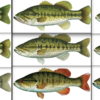
 https://www.bassmaster.com/conservation-news/news/are-there-...
https://www.bassmaster.com/conservation-news/news/are-there-...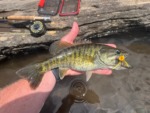
 https://nojiriko-fishing.net/beautiful_red_eye_bass/
https://nojiriko-fishing.net/beautiful_red_eye_bass/




